These American League team-by-team recaps focus on the first five rounds of this week's MLB Rule 4 draft, although I'll mention lower picks as appropriate if it's a player of note or someone I thought was worthy of a higher pick. The National League version will appear on Friday.
Baltimore Orioles | Boston Red Sox | Chicago White Sox | Cleveland Indians | Detroit Tigers | Houston Astros | Kansas City Royals | Los Angeles Angels | Minnesota Twins | New York Yankees | Oakland A's | Seattle Mariners | Tampa Bay Rays | Texas Rangers | Toronto Blue Jays
Baltimore Orioles
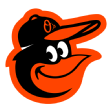 The Orioles scored big with their first pick, Georgia prep lefty D.L. Hall (first round), who ranked eighth on my board. He's an athletic kid with a plus fastball and curveball already, average changeup, and a good delivery. The O's have had trouble developing pitchers, notably because they've changed a lot of kids' mechanics, but if they just let Hall be he should dominate the low minors. The O's also took Canadian shortstop Adam Hall (second round), no relation to D.L., who wasn't on my top 100; he's an average runner with some bat speed but a wrap and a linear approach that doesn't look as if it'll produce power, and I think he's maybe 50/50 to stay at short.
The Orioles scored big with their first pick, Georgia prep lefty D.L. Hall (first round), who ranked eighth on my board. He's an athletic kid with a plus fastball and curveball already, average changeup, and a good delivery. The O's have had trouble developing pitchers, notably because they've changed a lot of kids' mechanics, but if they just let Hall be he should dominate the low minors. The O's also took Canadian shortstop Adam Hall (second round), no relation to D.L., who wasn't on my top 100; he's an average runner with some bat speed but a wrap and a linear approach that doesn't look as if it'll produce power, and I think he's maybe 50/50 to stay at short.
Zac Lowther was taken in competitive balance round B after the second round (2B), which made him the highest-drafted player ever from Xavier University. He's a big, thickset lefty who'll pitch at 89-90 mph as a starter to go with a plus breaking ball, probably in a back-end starter, but he might be more valuable in a relief role. Jacksonville University right-hander Mike Baumann (3) has touched 97 mph with his fastball and sits mid-90s as a starter with an assortment of not-average secondary pitches, although his slider might get there in time. Given his delivery and below-average command, the consensus on Baumann had him as a two-pitch power reliever in pro ball. Right-hander Jack Conlon (4) has a big arm, throws 92-95 mph with some sink, and shows an above-average breaking ball, but he has a violent delivery with a head-whack and he'll need a lot of cleaning up to start. Lamar Sparks (5) is an upside play, a high school outfielder who can run and has a 70 arm with average present power and a swing that works but the usual questions about how advanced the bat is right now.
Boston Red Sox
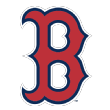 Tanner Houck (1) has been a dominant starter for three full years at Mizzou, working with an above-average fastball/slider combination, good sink at 92-93 mph and a four-seamer clocked up to 97, but the delivery is cross-body and has effort to it. The combination gives him deception and he always has thrown strikes, but I have real concerns he'll wind up a reliever, especially if the changeup -- a pitch he has but that Mizzou never calls -- doesn't develop. Outfielder Cole Brannen (2) was probably a top-40 pick had he been healthy all year, but he started out badly while coming back from a broken hamate bone. He's a 60- or 70-grade runner and should be a good defensive center fielder, and he has the bat speed to hit but doesn't project to power with his current mechanics.
Tanner Houck (1) has been a dominant starter for three full years at Mizzou, working with an above-average fastball/slider combination, good sink at 92-93 mph and a four-seamer clocked up to 97, but the delivery is cross-body and has effort to it. The combination gives him deception and he always has thrown strikes, but I have real concerns he'll wind up a reliever, especially if the changeup -- a pitch he has but that Mizzou never calls -- doesn't develop. Outfielder Cole Brannen (2) was probably a top-40 pick had he been healthy all year, but he started out badly while coming back from a broken hamate bone. He's a 60- or 70-grade runner and should be a good defensive center fielder, and he has the bat speed to hit but doesn't project to power with his current mechanics.
Brett Netzer (3) is a second baseman from UNC-Charlotte with a short swing from a dead start who never strikes out and doesn't project to any power. Right-hander Jake Thompson (4) of Oregon State was dominant this year for the Beavers. He was a redshirt junior who missed most of 2015 because of a back injury and hadn't pitched at this level before. His fastball has been clocked up to 95 mph, complemented with an average slider and changeup but has a high-effort no-windup delivery. The Red Sox had been linked to Alex Scherff (5) in the second round but landed him in the fifth; the Arizona State commit sits 91-94 mph with an above-average curveball and average change, with a short stride that's not that common on starting pitchers.
Chicago White Sox
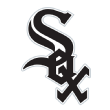 Chicago went for impact college bats on Day 1, taking two of the strongest hitters on the board in Jake Burger (1) and Gavin Sheets (2). Burger had some of the best exit velocities in the class and there's little question about his bat, whether it's to hit or show power, but he's probably not going to stay at third base over the long haul. Sheets is very strong and looks the part of a big league slugger, but analysts were concerned about his huge home/road splits (Wake Forest is a great park for power hitters) and trouble with left-handed pitching.
Chicago went for impact college bats on Day 1, taking two of the strongest hitters on the board in Jake Burger (1) and Gavin Sheets (2). Burger had some of the best exit velocities in the class and there's little question about his bat, whether it's to hit or show power, but he's probably not going to stay at third base over the long haul. Sheets is very strong and looks the part of a big league slugger, but analysts were concerned about his huge home/road splits (Wake Forest is a great park for power hitters) and trouble with left-handed pitching.
The Sox kept it going with New Mexico outfielder Luis Gonzalez (3), who might have slipped that far on some late makeup questions. He shows above-average range in center and has good bat speed, with some mechanical issues that might limit his contact rates. UNM plays at the Albuquerque Isotopes' ballpark, one of the most extreme hitters' parks in minor league or Division I baseball, and no position player drafted from UNM has ever posted positive WAR in the majors.
Louisville reliever Lincoln Henzman (4) could move up quickly. He's a strike-thrower with a low-90s fastball and promising cutter, although he has started in the past and could move back to that role. Tyler Johnson (5) was South Carolina's closer and has reached 98 mph with his fastball, but it's an all-arm delivery and he missed time this spring with "arm soreness." Louisville right-hander Kade McClure (6) is 90-93 as a starter with a solid-average breaking ball at 79-82 and projects as a fifth starter. TCU catcher Evan Skoug (7) showed surprising power this year but struck out in 36 percent of his at-bats. I thought his swing would produce more contact but fewer homers, and it might be that that's a tradeoff he'll have to make. He's a long shot to catch but should at least start his pro career behind the dish.
Cleveland Indians
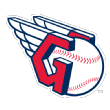 Cleveland didn't have a first-round pick because it signed Edwin Encarnacion as a free agent, so its first selection came in the second round with Queens High School outfielder Quentin Holmes. He had first-round upside but struggled with the bat all spring. He's fast and athletic but still not very physically mature and needs to add strength in addition to improving his pitch recognition, and might be a two-year rookie ball guy.
Cleveland didn't have a first-round pick because it signed Edwin Encarnacion as a free agent, so its first selection came in the second round with Queens High School outfielder Quentin Holmes. He had first-round upside but struggled with the bat all spring. He's fast and athletic but still not very physically mature and needs to add strength in addition to improving his pitch recognition, and might be a two-year rookie ball guy.
The team surprised a lot of scouts by taking Tyler Freeman with the 71st pick overall with its competitive balance pick after the second round. He's a high school shortstop committed to TCU, and I think most teams had him off their boards either on signability or because they didn't think he was physically ready for pro ball. He can hit but is undersized and might not stay at short. I thought he was a "college guy," meaning he'd need to go to school, and after that could make himself a better prospect depending on how his body filled out.
The Indians announced Virginia shortstop Ernie Clement (4) as a second baseman, where I thought he'd have to move. Like most UVA hitters, he never strikes out, but he also never walks and projects for no power, hitting only four homers in total in three seasons at UVA and three summers. Mike Rivera (6) has been Florida's primary catcher for two-plus years and seems like a lock to get to the majors as a backup because of his receiving skills and reputation for handling pitchers.
Detroit Tigers
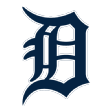 Alex Faedo (1) seems like a very Tigers draft pick -- a big, physical, hard-throwing (sometimes) pitcher who has some reliever risk. They've even done this before from the same school, taking Florida starter Jonathan Crawford at pick 20 in 2013. (Crawford went to the Reds with Eugenio Suarez in the trade that sent Alfredo Simon to Detroit; Crawford is in High-A this year and has walked more batters than he has struck out.) Faedo was a potential single-digits pick but never got back into form after offseason knee surgery, pitching at 90-94 mph when I saw him against Vanderbilt along with a plus slider that he threw a lot and a below-average changeup. His delivery lacked rhythm and if that was all I'd ever seen of him I would say he's 100 percent a reliever -- but it's possible he needs more time to get his knees back to full strength.
Alex Faedo (1) seems like a very Tigers draft pick -- a big, physical, hard-throwing (sometimes) pitcher who has some reliever risk. They've even done this before from the same school, taking Florida starter Jonathan Crawford at pick 20 in 2013. (Crawford went to the Reds with Eugenio Suarez in the trade that sent Alfredo Simon to Detroit; Crawford is in High-A this year and has walked more batters than he has struck out.) Faedo was a potential single-digits pick but never got back into form after offseason knee surgery, pitching at 90-94 mph when I saw him against Vanderbilt along with a plus slider that he threw a lot and a below-average changeup. His delivery lacked rhythm and if that was all I'd ever seen of him I would say he's 100 percent a reliever -- but it's possible he needs more time to get his knees back to full strength.
Reynaldo Rivera (2) is a massive kid from Chipola College, a power-over-hit guy who scouts think will struggle against good pitching and who might end up at first base given his size. University of Washington catcher Joey Morgan (3) is a great catch-and-throw guy with a high probability of at least becoming a big league backup; he can hit a little bit but doesn't project to power or on-base skills. Sam McMillan (5) is a prep catcher who can throw and has power with a huge swing that can collapse his back side. Notre Dame starter Brad Bass (6) has been 90-92 as a starter with a mid-80s slider but showed better velocity before as a reliever and could have more value if he returns to that role.
Houston Astros
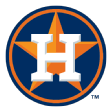 The Astros landed North Carolina right-hander J.B. Bukauskas (1) at pick No. 15 after he was tabbed as a likely top-10 guy for most of the spring, although it's possible his standing slipped a little bit at the end of the year when he seemed to lose some command. Bukauskas is a 6-foot right-hander who'll touch 98 with a plus slider and feel for a changeup that UNC didn't call very often, and normally he's a big strike-thrower with a very aggressive approach. He doesn't have much plane on his fastball and his delivery doesn't make much use of his lower half at all, so many scouts and execs feel as if he's more likely a reliever than a starter.
The Astros landed North Carolina right-hander J.B. Bukauskas (1) at pick No. 15 after he was tabbed as a likely top-10 guy for most of the spring, although it's possible his standing slipped a little bit at the end of the year when he seemed to lose some command. Bukauskas is a 6-foot right-hander who'll touch 98 with a plus slider and feel for a changeup that UNC didn't call very often, and normally he's a big strike-thrower with a very aggressive approach. He doesn't have much plane on his fastball and his delivery doesn't make much use of his lower half at all, so many scouts and execs feel as if he's more likely a reliever than a starter.
Archbishop McCarthy's Joe Perez (2) is scheduled for Tommy John surgery this week. He has been up to 97 as a pitcher, but the Astros took him as a bat, so he should be able to return to action by spring training if all goes well. He's a third baseman, assuming his plus-plus arm is fine, and keeps his hands inside the ball very well at the plate, with a linear swing that looks more geared to contact than power. The Astros received two picks from the Cardinals as a result of a St. Louis employee hacking into the Astros' baseball ops database, and used those picks on Texas A&M right-hander Corbin Martin (2) and Arizona hitter J.J. Matijevic (2B). Martin came into the year as a potential first-rounder but struggled early and bounced in and out of the Aggies' rotation before finishing more strongly. He has a starter's arsenal, 91-93 with a slider and changeup, but it's a late arm and there's some stress on the shoulder as a result. Matijevic put up huge numbers in Tucson, a good hitters' environment, but strikes out a bit too often and is a physically mature 5-foot-11 kid who's probably limited to first base even though he was announced at second.
Grayson County College right-hander Tyler Ivey (3) wasn't on many boards but has crept into the low to mid-90s with a loose, quick arm and a chance for an above-average breaking ball, although there is a split camp on whether it's a starter's delivery. Notre Dame reliever Peter Solomon (4) was bounced from the rotation -- perhaps saving his arm -- and was 92-94 out of the pen with an average slider that kept backing up on him when I saw him pitch, as he was releasing it a bit too early. He's a good project for a player development staff because of the arm strength, but he needs some delivery work. Virginia prep catcher Nathan Perry (5) has power from the left side but is a project behind the plate; he's committed to High Point. Iowa's Jake Adams (6) transferred from a junior college and hit .335/.417/.747 with 29 homers for the Hawkeyes but punched out 57 times and can't play anywhere except first base, if that. Kyle Serrano (10) could have had seven figures out of high school, went to pitch for his dad at Tennessee, blew out, didn't throw strikes, pitched only 13 innings his last two seasons, and ended up a senior sign in the 10th round. He still can show mid-90s velo with a power curveball and I would put him right in the pen and let him go.
Kansas City Royals
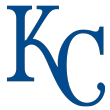 Nick Pratto (1) has one of the best hit tools in the draft class, a great left-handed swing that produces plenty of contact and should lead to future average power. He's a high school first baseman, so his upside is limited, and that's as bad a demographic in the first round as you can find. In the past 15 drafts, only one first-round high school first baseman has ended up producing positive WAR in the majors -- the Royals' own Eric Hosmer. Catcher M.J. Melendez (2) has a 70 arm (if not better) behind the plate and hits for power. He's agile behind the plate but too active, with the potential to be a good receiver if he slows his game down. I'm more concerned about the hit tool, as his swing works but he doesn't have great bat speed. JC lefty Evan Steele (2A) was worked unbelievably hard at Chipola this spring, throwing 140-plus pitches in a playoff outing despite missing time earlier in the spring because of arm trouble. He's 90-91 with an average breaking ball, and it's very tough on lefties because he comes across his body.
Nick Pratto (1) has one of the best hit tools in the draft class, a great left-handed swing that produces plenty of contact and should lead to future average power. He's a high school first baseman, so his upside is limited, and that's as bad a demographic in the first round as you can find. In the past 15 drafts, only one first-round high school first baseman has ended up producing positive WAR in the majors -- the Royals' own Eric Hosmer. Catcher M.J. Melendez (2) has a 70 arm (if not better) behind the plate and hits for power. He's agile behind the plate but too active, with the potential to be a good receiver if he slows his game down. I'm more concerned about the hit tool, as his swing works but he doesn't have great bat speed. JC lefty Evan Steele (2A) was worked unbelievably hard at Chipola this spring, throwing 140-plus pitches in a playoff outing despite missing time earlier in the spring because of arm trouble. He's 90-91 with an average breaking ball, and it's very tough on lefties because he comes across his body.
JC lefty Daniel Tillo (3) will top out at 89-92 with a sweepy slider from a low 3/4 slot and missed some time late in the spring because of injury. Lipscomb outfielder Michael Gigliotti (4) starred on the Cape last summer but never got anything going at the plate this spring, eventually bunting for more hits because he was having trouble making good contact. He's a plus-plus runner who should be above average in center, but of course he has to recapture the hit tool he showed in 2016.
Los Angeles Angels
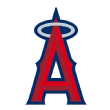
Kentucky prep outfielder Jordon Adell (1) was going somewhere in this range of the draft, clearly, based on his tools, but I didn't find a more polarizing guy among scouts this spring. Some think he's a tooled-up budding superstar, and some think he's the next Anthony Hewitt -- all tools, no production. He also had issues throwing this spring. He'd been 90-93 as a pitcher in the past but was showing, in the words of more than one scout, "a 30 arm" from the outfield this year. On the one hand, I completely understand seeing a guy with this upside and pushing him to the top of your draft board, but I personally would have a hard time with this profile -- raw hitter, lot of swing and miss, betting you can get the hit tool to where it needs to be so the other tools play -- knowing he's also got something amiss with his arm too.
UCLA's Griffin Canning (2) was a sure first-rounder and could have gone No. 10 overall to the Angels if the board had gone differently up top ... and if he hadn't gotten an MRI, part of MLB's new voluntary process where players can choose to submit these exam results to all teams. Whatever teams found in Canning's, they didn't like, and it cost him a million bucks. Canning has some effort in his delivery and he was worked extremely hard at UCLA for three years -- 137 pitches the night I saw him -- but whatever the cause of the injury was, it dropped him in the draft. It's the Angels' gain, and if Canning has to miss a year due to surgery, the opportunity cost of a second-round pick is so much lower than that of a first-round pick that I understand taking the gamble there.
Jacob Pearson (3) is a Louisiana prep outfielder with a good swing and strong hands, projecting to hit for average with some power, but might end up in left field due to his lack of speed or arm strength. I thought he might sneak into the second round. John Swanda (4) is a projection right-hander from Iowa with a good delivery and arm action. He's a good athlete who can already spin it despite being more of a shortstop than pitcher before this spring. Alabama prep right-hander Joseph Booker (5) has been up to 94 with feel for a breaking ball. He's a good athlete and scouts really liked his makeup.
Minnesota Twins
 Early reviews around the game on the Twins' draft have been ... less than glowing. They took Royce Lewis (1), the fifth-ranked player on my board, first overall, but don't appear to have used any savings to get top talents with later picks. Lewis is a very athletic, quick-twitch kid, a plus runner with good bat speed, very unlikely to stay at shortstop or even on the dirt but a potential plus-plus defender in center given his speed and instincts.
Early reviews around the game on the Twins' draft have been ... less than glowing. They took Royce Lewis (1), the fifth-ranked player on my board, first overall, but don't appear to have used any savings to get top talents with later picks. Lewis is a very athletic, quick-twitch kid, a plus runner with good bat speed, very unlikely to stay at shortstop or even on the dirt but a potential plus-plus defender in center given his speed and instincts.
They used their competitive balance pick on Mississippi State's Brent Rooker (competitive balance round A, after the first round, or 1A), a redshirt junior -- so, in the controlled economy of the baseball draft, a player with very little leverage -- who destroyed the SEC this year with a revamped swing, slugging over .800 and hitting well against good pitching in the conference. Rooker turns 23 in November and doesn't really have a position, so he needs to rake and do it quickly. They took Landon Leach at pick No. 37 (first pick in Round 2), a Canadian pitcher and the first player selected outside of my top 100. The 6-foot-4 right-hander is 91-93 with a hard slider, but the fastball is very straight -- even low-level hitters were squaring it up -- and his arm is late relative to his landing leg.
They opened day two with Blayne Enlow (3), a first-round talent in my view and the best player on the board after the first day. He has a wipeout breaking ball and has been in the low 90s but fatigued at the end of the spring and was sitting in the mid to upper 80s. He needs to get stronger but I love the way his arm works and the ball explodes out of his hand. Clemson junkballer Charlie Barnes (4) had great results this year with a fringy fastball that might play as a 45 or below in pro ball, throwing strikes and using an assortment of offspeed stuff. Guys like Barnes can end up big league starters but the line they walk is very thin. The Twins did pass one test with Andrew Bechtold (5), a third baseman at Chipola College with a quick and powerful swing, and an above-average runner. He can get passive at the plate but there's a solid tools package here to start with. Ricardo de la Torre (6) is a true shortstop who needs to get a lot stronger at the plate; he's a great long-term prospect and also strong value at this spot.
New York Yankees
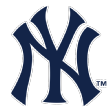 Clarke Schmidt (1) was probably going to be drafted in the teens if he'd stayed healthy all spring, as he had been bumping 97 mph with his usual strong results, but South Carolina brought him back fast from an oblique strain, throwing him right back into the fire with three straight 100-pitch outings, after which his elbow screamed. He had Tommy John surgery in April and will be out until at least next spring. When healthy, he was throwing 94-97 mph with good life, plus a short downer mid-80s breaking ball and a big action changeup that he didn't use very often. He has a rough arm action with timing issues, where his arm is very late when his front leg strikes; when I saw him at the SEC tournament in 2016 I thought he'd end up a reliever or hurt.
Clarke Schmidt (1) was probably going to be drafted in the teens if he'd stayed healthy all spring, as he had been bumping 97 mph with his usual strong results, but South Carolina brought him back fast from an oblique strain, throwing him right back into the fire with three straight 100-pitch outings, after which his elbow screamed. He had Tommy John surgery in April and will be out until at least next spring. When healthy, he was throwing 94-97 mph with good life, plus a short downer mid-80s breaking ball and a big action changeup that he didn't use very often. He has a rough arm action with timing issues, where his arm is very late when his front leg strikes; when I saw him at the SEC tournament in 2016 I thought he'd end up a reliever or hurt.
Matt Sauer (2) is also a tough-delivery guy -- a big, athletic kid throwing up to 95 mph with a good breaking ball but with a lot of head violence in his delivery and a cutoff landing that brings him back across his body too. I know some teams were fine with the way his arm works despite all of that and saw a mid-rotation starter. Arkansas right-hander Trevor Stephan (3) has shown a plus fastball but no above-average second pitch and he has a rough cross-body delivery. He started in his one year with the Hogs but is probably a reliever in pro ball. Texas prep outfielder Canaan Smith (4) is a former quarterback with a football build; he's strong for 6-footer but his swing is out of control and I worry there's a lot of swing-and-miss here. Glenn Otto (5) is a Rice pitcher, with the added injury risk that that always carries, and he missed fall ball because of arm soreness. He worked primarily in relief this year, throwing heat sitting in the low to mid 90s and walking a man every other inning.
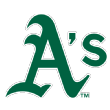 Austin Beck (1) has some of the best bat speed scouts have seen in years, reminiscent of Clint Frazier or Javier Baez, along with above-average running speed and a plus arm. He's already pretty big physically and is going to be huge when his upper body fills out, so he might end up a power-hitting right fielder rather than staying in center. The biggest question on him is his hit tool, because he faced weak competition this spring -- I happened to see him in a game his team won 15-0 via mercy rule -- and didn't face any top arms last summer because he was rehabbing an ACL injury. Kevin Merrell (1A) is a 70 runner with a slappy little swing that has never produced any power except for this spring at USF. He had only one extra-base hit in 59 plate appearances on the Cape (with wood) last summer. He's probably not a shortstop in the long run, likely to move to second or center field. LSU outfielder Greg Deichmann (2) projects as a low-average, high-walks and power corner outfielder, although his defense in left or right projects as just fringy. He's already 22 and I believe he was the second-oldest hitter taken on Day 1.
Austin Beck (1) has some of the best bat speed scouts have seen in years, reminiscent of Clint Frazier or Javier Baez, along with above-average running speed and a plus arm. He's already pretty big physically and is going to be huge when his upper body fills out, so he might end up a power-hitting right fielder rather than staying in center. The biggest question on him is his hit tool, because he faced weak competition this spring -- I happened to see him in a game his team won 15-0 via mercy rule -- and didn't face any top arms last summer because he was rehabbing an ACL injury. Kevin Merrell (1A) is a 70 runner with a slappy little swing that has never produced any power except for this spring at USF. He had only one extra-base hit in 59 plate appearances on the Cape (with wood) last summer. He's probably not a shortstop in the long run, likely to move to second or center field. LSU outfielder Greg Deichmann (2) projects as a low-average, high-walks and power corner outfielder, although his defense in left or right projects as just fringy. He's already 22 and I believe he was the second-oldest hitter taken on Day 1.
The A's took Nick Allen (3) with their first pick on Day 2, landing a second first-round talent; if Allen were 5-foot-11 rather than 5-8, I think he would have gone in the top 10. He can stay at short, and he can really hit, and he's not powerless either. He'd supposedly wanted a big number to sign, but I assume the A's took him knowing they could meet his price tag -- perhaps by going under slot on Merrell and/or Deichmann. Allen and Beck make a great 1-2 upside punch. Vanderbilt's Will Toffey (4) is a plus defender at third and a great college player but doesn't project to hit enough in pro ball to be more than an up-and-down type. After that they went for less expensive picks, including some senior signs, probably to clear cash to sign Allen.
Seattle Mariners
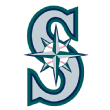
Kentucky first baseman Evan White (1) is a plus defender there but so athletic that the M's might be better off moving him to the outfield. That could also help his overall profile. He has quick hands and good extension through contact but hasn't shown the power you want from a first baseman yet. I had Sam Carlson (2) as a first-round talent, but high school right-handers are a high-risk class and many teams prefer to take those guys later and pay them over-slot bonuses. Carlson consistently hits 96 and gets praised for his work ethic, but he does need to find a better breaking ball to remain a starter in the long run. He has very little mileage on his arm as a cold-weather kid who didn't make his first start this spring until April. Gonzaga senior Wyatt Mills (3) is almost certainly a discount pick to help shift bonus pool money to Carlson. He's a reliever with an average fastball/slider combo but did post silly numbers this year, with 58 strikeouts and four walks in 40 innings. Dallas Baptist reliever Seth Elledge (4) is 93-94 with a slider that flashes average and throws strikes. Catcher David Banuelos (5) is a catch-and-throw guy, particularly the throw part but has never hit well enough to consider him a potential regular. Oliver Jaskie (6) had a solid year at Michigan, but the lefty has just a fringe-average fastball and below-average breaking ball.
Tampa Bay Rays
 The Rays scored big-time with their first pick, taking Brendan McKay (1) fourth overall. McKay is a two-way player for the University of Louisville. Tampa Bay will at least start him out as both a starting pitcher and a first baseman, although I doubt he'll pitch again until next year given his workload this spring for the Cardinals. I thought most of the spring that his future was on the mound, since lefties with three pitches and command like he has are scarce commodities. But he wore down as the spring went on but kept right on hitting and hitting for power, so maybe he's a better asset with the bat after all.
The Rays scored big-time with their first pick, taking Brendan McKay (1) fourth overall. McKay is a two-way player for the University of Louisville. Tampa Bay will at least start him out as both a starting pitcher and a first baseman, although I doubt he'll pitch again until next year given his workload this spring for the Cardinals. I thought most of the spring that his future was on the mound, since lefties with three pitches and command like he has are scarce commodities. But he wore down as the spring went on but kept right on hitting and hitting for power, so maybe he's a better asset with the bat after all.
The Rays took Oregon State right-hander Drew Rasmussen (1A). He had Tommy John surgery in March 2016 but is already back and pitching as if he never missed any time; he's throwing 93-95 mph again, complemented with a slider that flashes plus. But I'm concerned about his workload as the Beavers head to Omaha. Right-hander Michael Mercado (2) was seen as a very tough sign due to his commitment to Stanford. He has an unrefined delivery, but he has projection for days on end and is already throwing 89-92 just on natural ability while also showing some feel for a curveball.
Florida State shortstop Taylor Walls (3) projects as a utility infielder; he's not a lock to handle short and not providing much offense at all, hitting just .276/.421/.428 for the Noles this spring and unlikely to show even grade 40 power with wood. Saint Mary's right-hander Drew Strotman (4) had been 89-91 mph early in the year but in April started bumping 97 mph and holding it deep into games; he comes from a high release point and gets behind his low-80s breaking ball, but the arm strength is pretty enticing. Lefty Josh Fleming (5) of Webster University was named the Division III pitcher of the year, punching out a third of the batters he faced thanks to an above-average curveball and average changeup.
Texas Rangers
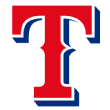
Bubba Thompson (1) seems like such a quintessential Rangers pick, a multisport guy with big tools across the board but questions about how much he'll hit. He's a former quarterback with plus speed, arm strength, and power, projecting to stay in center field, and while scouts like his swing, he hasn't faced a ton of good competition playing in the deep South, and he's already 19 years old. Chris Seise (1A) seems likely to stay at shortstop and has a good mechanical swing, but it's all physical projection and he doesn't have a lot of present strength for hard contact.
Right-hander Hans Crouse (2) has a lot of effort in his delivery but has been up to 97 as a starter and really attacks hitters with a hard but slurvy breaking ball. Oral Roberts catcher Matt Whatley (3) is a premium catch-and-throw guy with an outside chance to hit enough to be a regular but a high floor as a backup. Ryan Dease (4) is a Florida prep right-hander who mostly pitched in the upper 80s with a below-average slider. He was expected to go to the University of Central Florida. Jake Latz (5) has been 88-94 with a plus curveball and above-average changeup, and the delivery works for a starter, but he has some injury concerns and redshirted this year after transferring from LSU, where the Tigers could barely use him.
Toronto Blue Jays
 The Jays took North Carolina shortstop Logan Warmoth (1), who I thought was a top-10 talent in the draft, at pick 22. He's likely to stay at shortstop, is an above-average runner, and had one of the best swings in the draft class. I did hear some teams were concerned about his exit velocities, but I do think the swing works well enough that I'd bet on sufficient hard contact to make him a regular at short. They got junior college right-hander Nate Pearson (1A) with the compensatory pick for losing Edwin Encarnacion. Pearson had hit 101 mph in a workout for scouts on Memorial Day but hasn't shown a consistent average breaking ball yet, and I think it's a long development curve for him as a starter -- but with high upside.
The Jays took North Carolina shortstop Logan Warmoth (1), who I thought was a top-10 talent in the draft, at pick 22. He's likely to stay at shortstop, is an above-average runner, and had one of the best swings in the draft class. I did hear some teams were concerned about his exit velocities, but I do think the swing works well enough that I'd bet on sufficient hard contact to make him a regular at short. They got junior college right-hander Nate Pearson (1A) with the compensatory pick for losing Edwin Encarnacion. Pearson had hit 101 mph in a workout for scouts on Memorial Day but hasn't shown a consistent average breaking ball yet, and I think it's a long development curve for him as a starter -- but with high upside.
Catcher Hagen Danner (2) was a two-way player for Huntington Beach, a bat-first guy who probably doesn't stay at the position, although the Jays intend to start him out there; if he surprises everyone and remains a catcher he would probably be an above-average regular. Riley Adams (3) is also a catcher, this time from the college ranks, a good catch-and-throw guy with a little power but questions about how much he's going to hit.
Maryland shortstop Kevin Smith (4) came into the spring as a probable top-50 pick, but he never hit this year, even against the weak pitching of the Big Ten. He also didn't convince anyone he'd stay at short either, so he slipped to the fourth round as a probable utility infielder. The delightfully named Cullen Large (5) isn't, and he's not good at second base. Since he hasn't hit for much power or shown great walk rates, he's going to have to show a plus hit tool that he probably doesn't have.
